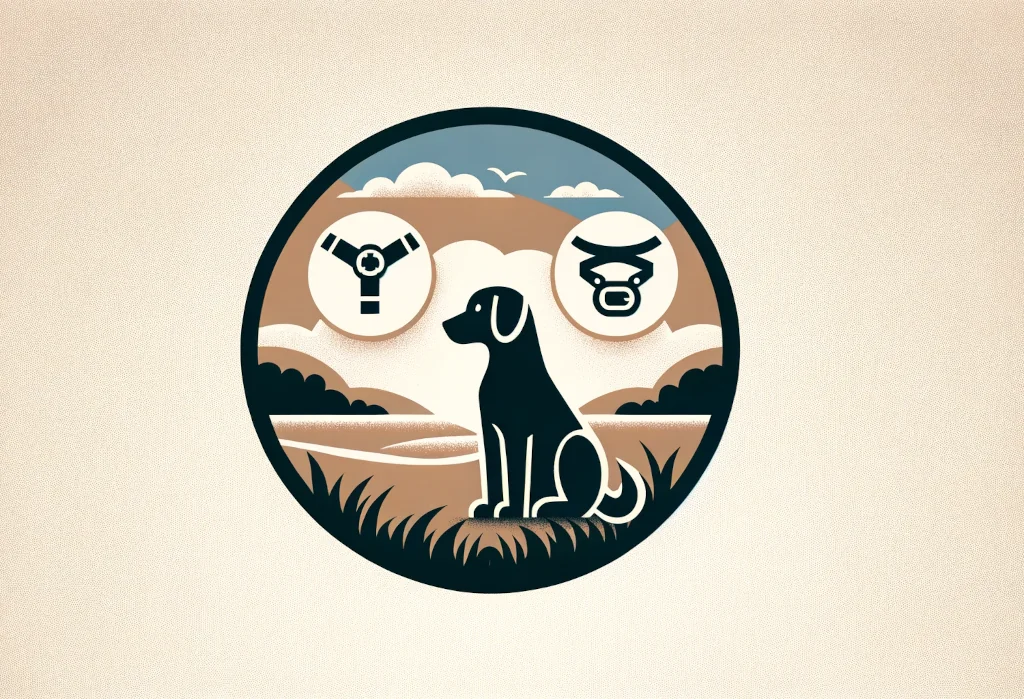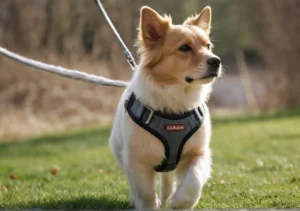Choosing between a harness and a collar for your dog seems like a basic decision, right? Yet it feels like standing at a crossroads without a map. These aren’t just accessories; they’re pivotal in your dog’s walking, training, and overall wellbeing.
In this post, we’ll walk you through a detailed guide comparing harnesses and collars, helping you make an informed decision suited to your furry friend’s needs.
Key takeaways:
- Harnesses offer better control and even pressure distribution, crucial for dogs that pull or have respiratory issues; collars provide simplicity and are suited for calm walkers without such concerns.
- Assess your dog’s needs based on size, breed, behavior, and health to choose between a harness and a collar — there’s no one-size-fits-all solution.
- Ensure a perfect fit using the two-finger rule between the accessory and your dog’s skin to prevent discomfort or escape, keeping your walks safe and enjoyable.
Why Consider a Harness for Your Dog?
When your bubbly pup is all geared up for a walk, the choice between slipping on a harness or clipping on a collar might not seem like a big deal. But, oh, how it can change the game for both you and your furry friend! Let’s break down why a harness might just be the best gear for your doggy adventures.
Better Control on Walks: If you’ve ever walked a dog that’s more like a small horse in disguise, you know the value of good control. A harness offers superior management without you having to transform into a sled dog musher. It distributes force more evenly, giving you leverage.
Safer for Eager Beavers: Dogs that treat every walk like a sprint can strain their necks with collars. Harnesses, on the flip side, are like a protective hug around their body, reducing the risk of any neck or tracheal injuries.
Even Pressure Distribution: When Fido decides to chase after a squirrel, a harness spreads the sudden pull across a broader area of their body, mitigating the shock. This is a big thumbs up for their overall well-being.
What Are the Advantages of Using a Collar?
Despite the harness hype, don’t write off collars just yet. They carry their own set of advantages that can make them the go-to choice for some dog parents.
Simplicity and Convenience: For those quick in-and-out trips, a collar is as straightforward as it gets. Snap it on, and you’re ready to go. Plus, it’s a no-brainer for hanging ID tags and licenses, ensuring your dog’s identification is always on them.
Ideal for Low-Maintenance Walkers: If your dog is a calm walker who doesn’t tug or pull, a collar can be just the right fit. It offers enough control without the need for the full-body embrace of a harness.
Comfort for Continuous Wear: Many dogs find collars comfortable enough to wear around the clock, making it easy for them to always have identification on them. Just ensure it’s properly fitted – snug enough so it won’t slip off, yet loose enough to fit two fingers between the collar and their neck.
How to Choose: Assessing Your Dog’s Needs
Picking between a harness and a collar isn’t about what’s trendy. It’s about what’s best for your dog. Here’s what to consider:
Size and Breed Matters: Larger breeds or those with respiratory issues might benefit more from a harness. Smaller breeds or those without such concerns could do just fine with a collar.
Behavioral Considerations: Is your dog a puller? A jumper? A harness can provide you with the control needed to manage these behaviors, especially during training.
Health and Respiratory Issues: Dogs with a history of tracheal or respiratory issues should lean towards harnesses to avoid any added pressure on their neck.
Purpose: Are you looking for something for daily walks, training, or just to have your dog’s ID on them at all times? Your primary purpose will help streamline your decision.
A nugget of advice most overlook: Try Both in Controlled Situations. Dogs are individuals, and what works for one might not for another. Your dog might show a clear preference or behave better with one over the other.
Remember, your dog’s comfort and safety should always come first. Whether it’s a stylish collar or a snug harness, the right choice is the one that best suits your furry companion’s needs. Keep an eye out on how they respond to either option and adjust accordingly. Happy walking!
Harnesses and Collars: Understanding the Different Types
When you’re strolling down the pet aisle, the variety of harnesses and collars can be downright overwhelming. But fear not, as we break down the most popular types to help you find the perfect fit for your four-legged friend.
Front-Clip Harnesses: These harnesses have the leash attachment at the chest which offers more control over the direction your dog moves. They are particularly beneficial for dogs that tend to pull, as the design redirects them towards you. Ideal for training sessions where you’re teaching Fido the ropes of polite walking.
Back-Clip Harnesses: With the leash attachment on the back, these are more suited for well-behaved walkers. They provide comfortable support without putting pressure on the throat and are great for smaller breeds susceptible to tracheal collapse.
Choke Collars: A bit controversial due to their potential for harm when used incorrectly. They tighten around the dog’s neck when they pull, which can control behavior but also can lead to injury. Best left for professional trainers or folks well-versed in their proper use.
Martingale Collars: A gentler alternative to choke collars, martingales have an extra loop that tightens gently, providing control without the choking hazard. They’re perfect for sighthounds whose heads are often smaller than their necks, but they’re also gaining popularity among other breeds for their safety and efficiency.
Fitting and Safety Tips
Finding the right harness or collar isn’t just about style; it’s vital for your pet’s safety and comfort. Here are some expert tips to ensure a perfect fit:
-
Measure Up: Before you shop, measure your dog’s neck and chest. Sizes can vary wildly between brands, so relying on an “S, M, L” system without knowing your dog’s measurements can lead to poor fits.
-
The Two-Finger Rule: Once the harness or collar is on, you should be able to fit two fingers comfortably between the accessory and your dog’s skin. This ensures that it’s snug enough not to slip off while still allowing your dog to breathe and move freely.
-
Adjust for Growth: Especially important for puppies. Regularly check the fit and adjust as needed. A collar or harness that’s too tight can cause discomfort or even injury over time.
-
Look for Signs of Discomfort: If your dog is frequently scratching at their collar, trying to wiggle out of their harness, or showing signs of discomfort, it might be the wrong fit or style for them.
Unique Tip: Engagement Distraction Test
Here’s a nugget of advice you might not find elsewhere: After fitting your dog with a new harness or collar, perform what I call the “Engagement Distraction Test.” While on a walk, if your dog can still focus on your commands without being distracted by trying to escape their harness or collar, you’ve likely found a good fit. If not, they might be uncomfortable, and it’s worth reassessing.
Remember, the perfect harness or collar does more than just look good; it ensures your walks are safe, comfortable, and enjoyable for both you and your pup. Take your time finding the right one, and don’t hesitate to ask a professional for advice if you’re unsure. Happy walking!
Alex, a passionate animal lover, has experience in training and understanding animal behavior. As a proud pet parent to two dogs and three cats, he founded AnimalReport.net to share insights from animal experts and expand his knowledge of the animal kingdom.





